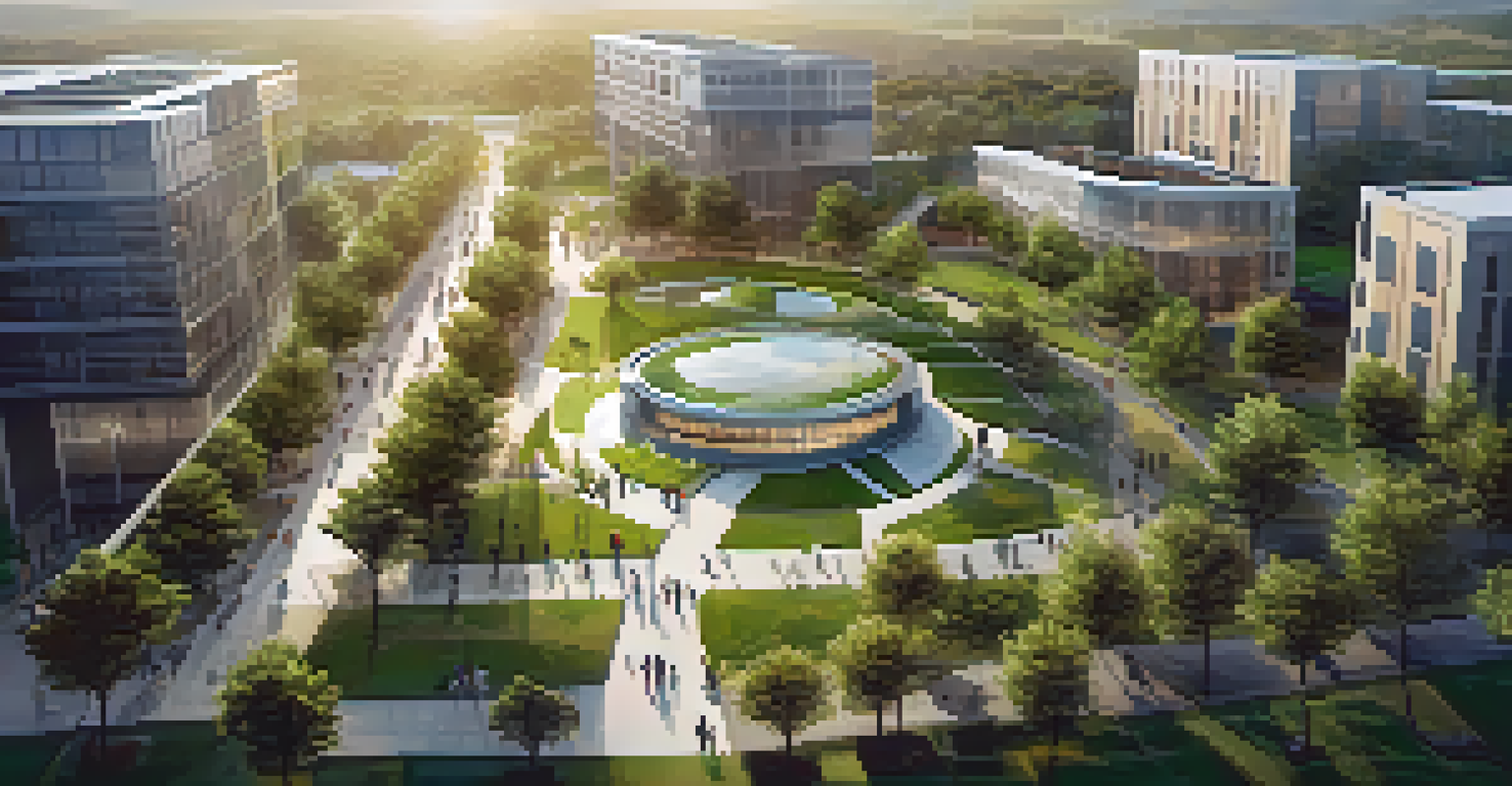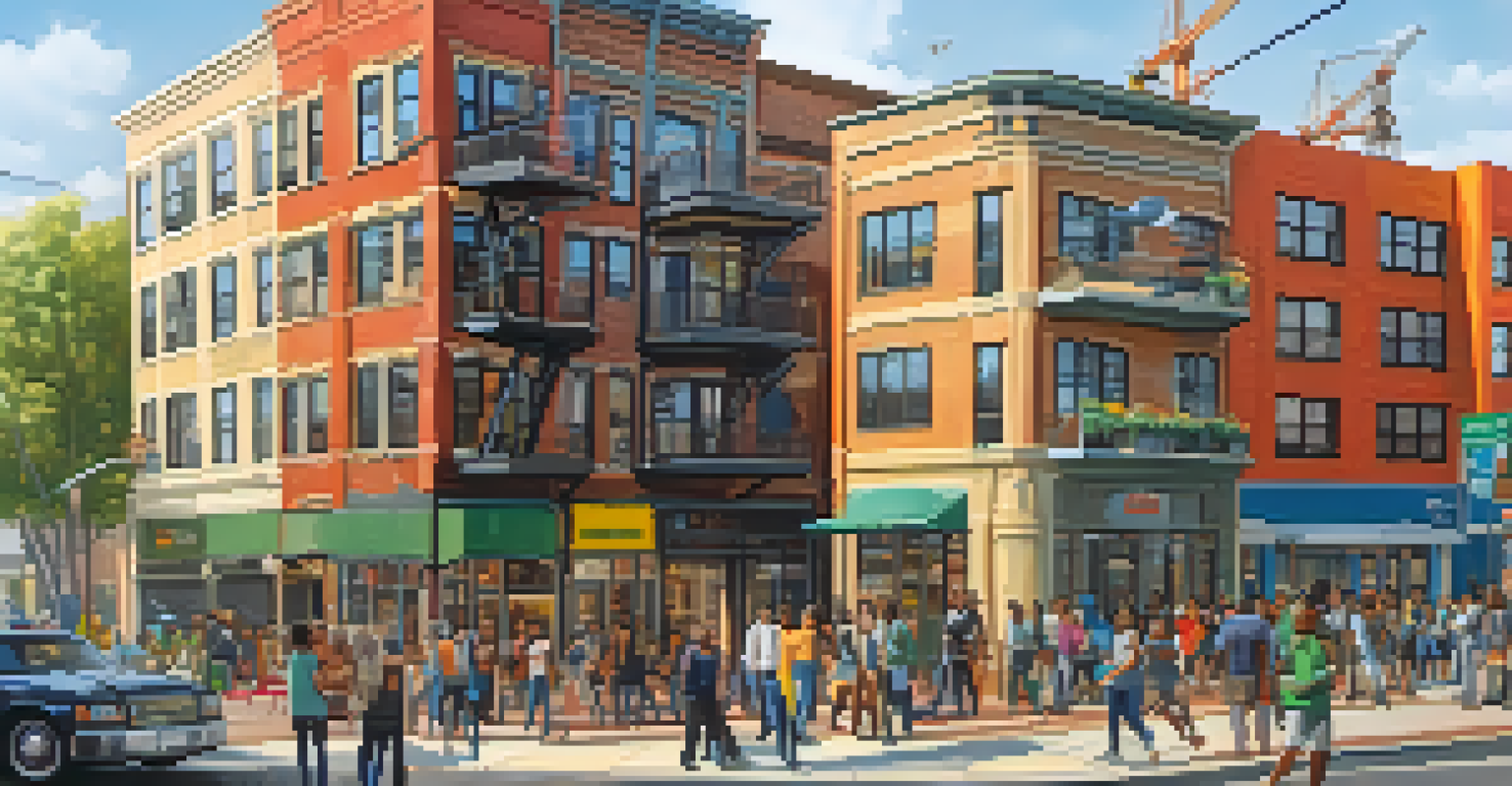The Influence of Tech Companies on California's Urban Growth

Tech Giants: Catalysts for Urban Expansion in California
California's urban landscapes are increasingly shaped by the presence of tech companies. Cities like San Francisco and San Jose have seen explosive growth, largely driven by the influx of tech talent and investment. This growth has transformed once quiet neighborhoods into bustling hubs of innovation and activity.
The future of urban living will demand a balance between innovation and community, where technology enhances rather than replaces the human experience.
As these tech giants establish offices and campuses, they attract a workforce that seeks proximity to their jobs. This has led to a demand for housing, transportation, and resources, prompting rapid urban development. Moreover, the presence of these companies has encouraged smaller tech startups to flourish in the same regions, further amplifying urban growth.
However, this rapid expansion isn't without challenges. With increased population density, cities face issues like rising housing costs and strained infrastructure. Balancing growth with livability is an ongoing challenge for urban planners in these tech-dominated areas.
Housing: The Double-Edged Sword of Tech Growth
The tech boom has significantly impacted California's housing market. While the influx of tech workers has boosted demand for housing, it has also driven prices skyward, making affordability a pressing issue. Many long-time residents find themselves priced out of their neighborhoods as new developments cater to higher-income earners.

Developers are responding by creating new housing projects, but these often fall short of meeting the needs of all residents. Luxury apartments and high-end condos dominate the landscape, while affordable housing options remain scarce. This discrepancy highlights the challenge of providing diverse housing solutions amidst rapid urban growth.
Tech Growth Fuels Urban Expansion
The influx of tech companies in California has driven rapid urban development, transforming neighborhoods and attracting a diverse workforce.
Moreover, the displacement of lower-income residents raises social equity concerns. As cities grapple with these issues, initiatives aimed at creating inclusive housing policies are becoming increasingly important in ensuring that all Californians can benefit from the tech economy.
Transportation: Adapting to a Tech-Driven Urban Landscape
The growth of tech companies in California has necessitated significant changes in transportation infrastructure. With thousands of employees commuting daily, cities are investing in public transit solutions to alleviate congestion. Initiatives like expanded bus routes and enhanced rail systems aim to provide efficient alternatives to driving.
Cities are the engines of innovation, and their growth must be managed with an eye towards sustainability and equity to truly thrive.
Additionally, companies are stepping in to offer their own transportation solutions. For instance, many tech firms provide shuttles for their employees, easing the burden on public transit. This not only benefits their workers but also reduces overall traffic congestion in urban areas.
However, these solutions are not without criticism. Some argue that private shuttles may lead to further disparities in access to transportation options. As cities continue to develop, finding a balance between private and public transportation will be crucial in creating a sustainable urban environment.
Green Spaces: The Intersection of Tech and Sustainability
As urban areas expand, the preservation and creation of green spaces become vital for maintaining quality of life. Tech companies, often at the forefront of sustainability initiatives, are increasingly recognizing the importance of green spaces in urban settings. Many firms are investing in parks and community gardens, enhancing local ecosystems and providing recreational areas for residents.
These green initiatives not only beautify urban environments but also contribute to mental and physical well-being. Studies show that access to green spaces can reduce stress and improve community cohesion. By integrating nature into urban planning, tech companies are helping to create healthier living environments.
Housing Crisis Amidst Tech Boom
While tech growth has increased housing demand, it has also led to soaring prices and a scarcity of affordable options for long-time residents.
However, the challenge lies in ensuring that these green spaces are accessible to all residents, regardless of socioeconomic status. Continued dialogue between tech companies, city planners, and community members is essential to ensure that urban growth remains inclusive and sustainable.
Economic Impact: Tech Companies and Local Economies
The influence of tech companies extends beyond physical urban growth; it also profoundly impacts local economies. The influx of high-paying jobs has boosted local businesses, from coffee shops to restaurants, creating a vibrant economic ecosystem. This ripple effect can be seen in the increased revenue and job opportunities within the community.
Moreover, tech companies often engage in corporate social responsibility initiatives, investing in local education and workforce development. These programs aim to equip residents with the skills needed for tech-related jobs, fostering inclusive economic growth. As a result, communities are not only benefiting from direct employment opportunities but also enhancing their long-term economic prospects.
However, this economic boom can create a reliance on the tech sector. If a downturn occurs, local economies may struggle to adapt. Diversifying economic opportunities beyond tech is crucial for ensuring long-term stability and resilience in these rapidly evolving urban landscapes.
Cultural Shifts: The Tech Influence on Urban Identity
The presence of tech companies in California has also led to profound cultural shifts within urban communities. As diverse groups of tech workers move in, they bring with them new ideas, lifestyles, and cultural practices. This infusion of talent and creativity has enriched local cultures, fostering a spirit of innovation and collaboration.
However, these changes can also lead to tensions between new and long-time residents. The rapid pace of gentrification often alters the cultural fabric of neighborhoods, leading to concerns about the loss of local identity. Striking a balance between embracing innovation and preserving historical and cultural heritage is a challenge that many California cities face.
Need for Inclusive Urban Solutions
Balancing the interests of tech companies with community needs is crucial for creating sustainable and equitable urban environments.
To navigate these cultural shifts, community engagement is essential. Involving residents in discussions about urban development can help ensure that growth reflects the values and identities of those who call the neighborhood home. This collaborative approach can lead to more vibrant, inclusive urban communities.
Future Outlook: Tech Companies and Urban Planning
As California's urban landscapes continue to evolve, the role of tech companies in urban planning will be more critical than ever. With their resources and innovative thinking, these companies have the potential to shape sustainable, livable cities. Collaborations between tech firms and city planners can lead to groundbreaking solutions that address urban challenges ranging from housing to transportation.
However, the success of these initiatives will depend on a commitment to inclusivity and social equity. Engaging with local communities to understand their needs and concerns is essential for ensuring that urban development serves everyone. As tech companies invest in the future, prioritizing the well-being of all residents will be vital.

Looking ahead, California's cities may become models for integrating technology and urban living. By leveraging tech advancements while remaining rooted in community values, urban growth can lead to thriving, resilient cities that benefit all inhabitants.